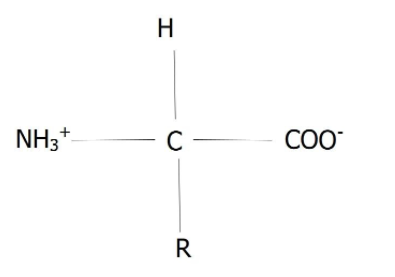
What functional groups are found in proteins?
Answer
512.1k+ views
Hint :Proteins serve many crucial functions in biological processes. They transport, act as a catalyst, storage for other molecules. They provide mechanical support, strength to the immune system, every important function happening in our body.
Complete Step By Step Answer:

Proteins are linear polymers of amino acids acting as a monomer unit, they contain a various number of functional groups due to the variety of functions it performs in our body.
Now they are various functional groups present in a protein ranging from alcohols, thiols, thioether, carboxylic acids, carboxamides, etc. All these functional groups have various and different functions to perform when attached to a protein.
Protein residues contain four major functional groups; the Amine group, the hydrogen group, the carboxyl group and the R (which can be any of the different types of amino acids) group.
Some of this amino acid residues also contain other elements such as sulphur but they aren't included in the four functional groups of protein.
The amino group of one amino acid and carboxyl group of another amino acid form peptide bonds, creating amino acid residues and peptide chains.
The functional groups present in a protein are amino, carboxyl and R(variant).
Note :
Proteins react with one another and with other biological macromolecules to form complex assemblies. Some proteins are quite rigid, whereas other display flexibility.
Complete Step By Step Answer:

Proteins are linear polymers of amino acids acting as a monomer unit, they contain a various number of functional groups due to the variety of functions it performs in our body.
Now they are various functional groups present in a protein ranging from alcohols, thiols, thioether, carboxylic acids, carboxamides, etc. All these functional groups have various and different functions to perform when attached to a protein.
Protein residues contain four major functional groups; the Amine group, the hydrogen group, the carboxyl group and the R (which can be any of the different types of amino acids) group.
Some of this amino acid residues also contain other elements such as sulphur but they aren't included in the four functional groups of protein.
The amino group of one amino acid and carboxyl group of another amino acid form peptide bonds, creating amino acid residues and peptide chains.
The functional groups present in a protein are amino, carboxyl and R(variant).
Note :
Proteins react with one another and with other biological macromolecules to form complex assemblies. Some proteins are quite rigid, whereas other display flexibility.
Recently Updated Pages
Why are manures considered better than fertilizers class 11 biology CBSE

Find the coordinates of the midpoint of the line segment class 11 maths CBSE

Distinguish between static friction limiting friction class 11 physics CBSE

The Chairman of the constituent Assembly was A Jawaharlal class 11 social science CBSE

The first National Commission on Labour NCL submitted class 11 social science CBSE

Number of all subshell of n + l 7 is A 4 B 5 C 6 D class 11 chemistry CBSE

Trending doubts
10 examples of friction in our daily life

One Metric ton is equal to kg A 10000 B 1000 C 100 class 11 physics CBSE

Difference Between Prokaryotic Cells and Eukaryotic Cells

1 Quintal is equal to a 110 kg b 10 kg c 100kg d 1000 class 11 physics CBSE

State the laws of reflection of light

Explain zero factorial class 11 maths CBSE




